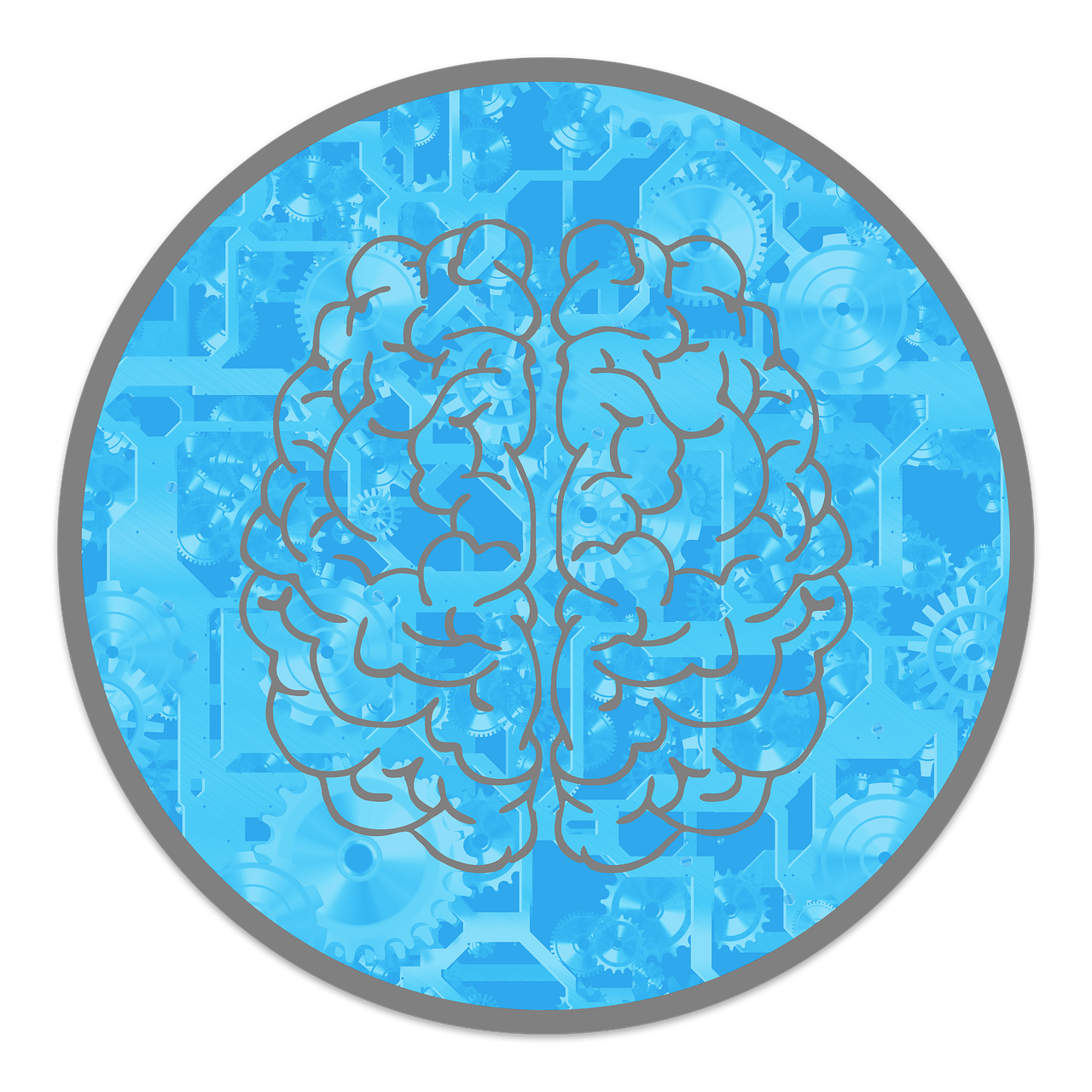
Ever feel like your brain’s got Wi-Fi issues—like you know you’re built for more, but something’s blocking the signal?
That’s a mental block.
From analysis paralysis to your inner critic going full Regina George, these invisible roadblocks mess with your potential more than a bad sequel.
But here’s the plot twist: you’re not stuck.
Mental blocks aren’t permanent.
Once you understand what’s causing the lag, you can reboot your mindset, clear the cache, and get back to crushing your goals like the main character you are.
In this guide, we’ll break down what’s going on in your head, why it happens, and how to hack through the noise so you can finally level up.
Understanding Mental Blocks: The Science Behind Invisible Barriers
Alright, here’s the brainy scoop on mental blocks—think of them as those annoying pop-up ads in your mind that stop you from thinking straight or being creative.
Scientifically, they happen when your brain hits “fear mode” or gets stuck replaying old bad vibes, which hijacks the part of your brain that’s supposed to be the boss—the prefrontal cortex.
But here’s the cool part: thanks to neuroplasticity (fancy word alert: it means your brain’s like a Lego set—it can rebuild and rewire itself), you can kick these blocks to the curb.
Research shows that when you adopt a growth mindset—basically telling your brain, “Hey, you’ve got this!”—you fire up new pathways that boost motivation and make you smarter at handling tough stuff.
Also, your brain’s “default mode network” (that’s the daydream channel in your head) can get way too active when you’re stressed, making you stuck in thought loops like a DJ stuck on repeat.
This overload makes decision-making feel like choosing what to binge-watch on Netflix… forever.
Knowing this brain science is like having the cheat codes.
It means you can actually retrain your mind, swap out those glitchy thought patterns, and unlock your mental superpowers. Time to level up!

Common Types of Mental Blocks That Limit Your Potential
Let’s be real—mental blocks are like the brain’s version of pop-up ads.
Annoying. Distracting. And they always show up right when you finally sit down to get stuff done.
Here’s a breakdown of the usual suspects:
1. Creative blocks
Ever stared at a blank screen so long it starts to feel personal? Welcome to Creative Block City.
You’ve got ideas—somewhere—but they’re hiding behind perfectionism, fear of judgment, or that inner critic yelling, “This better be a masterpiece!”
Sound familiar? That’s your brain freezing under pressure.
Artists, writers, entrepreneurs, and even meme-makers hit this wall.
2. Decision-making paralysis
This one’s like being stuck in the Netflix menu of life.
You’ve got 12 options. You overthink them all.
Suddenly it’s two hours later, and you’ve chosen… nothing.
When your brain short-circuits from choice overload, it’s usually fear doing the talking—fear of regret, failure, or not choosing “the best.”
But here’s the twist: not deciding is still a decision… usually the worst one.
Sometimes you just need to pick a lane and learn as you go.
3. Performance anxiety blocks
You know your stuff. You practiced. But the second it’s go-time—whether it’s a big presentation, a piano recital, or karaoke night—your brain bails.
That’s performance anxiety.
It’s your inner voice going, “What if I screw this up in front of everyone?”
Like stage fright hijacking your skill set. Happens to pros, rookies, and everyone in between.
The trick? Shifting from “What if I fail?” to “Let’s just play.”
Think Ted Lasso energy, not Whiplash.
4. Learning and growth blocks
This block shows up when your brain whispers, “You’re not good at this… so why even try?”
It’s the Fixed Mindset Troll, convincing you that intelligence or skill is something you either have or don’t.
Whether it’s coding, cooking, or trying to finally understand your taxes, this block makes you freeze or procrastinate.
But newsflash: your brain’s built to learn. Neuroplasticity is real.
You just need to trade in the “I can’t” for “I’m figuring it out.”
5. Confidence and self-worth blocks
This one’s the boss-level villain: self-doubt. Impostor syndrome.
That voice in your head going, “You’re not good enough” even after you crushed something.
It’s sneaky and powerful—because if you don’t believe you belong at the table, you won’t even pull up a chair.
Confidence blocks stop you from taking chances, applying for the job, starting the thing, or sharing your voice.
The fix? Start anyway. Confidence grows from action, not before it.

The Psychology Behind Mental Blocks: Why They Develop
Mental blocks don’t just pop up out of nowhere like surprise TikTok trends.
They’ve got roots—deep ones. Understanding why your brain hits pause helps you figure out how to hit play again. Here’s the lowdown:
Fear-based thinking patterns
Let’s be honest—your brain means well. It just really wants you to stay safe.
So when it senses a threat (even something like posting your art or asking for a raise), it flips into survival mode.
We’re talking full-on “Stranger Things Upside Down” mode: heart racing, brain fog, panic playlist activated.
The kicker? The “threat” is usually just fear of failure, embarrassment, or someone judging your LinkedIn post.
But your brain can’t tell the difference.
So it slams the brakes—creativity, focus, decision-making? All frozen. Thanks, amygdala.
Perfectionism and all-or-nothing thinking
If you think your work has to be flawless or it’s trash… congrats, you’ve met All-or-Nothing Thinking.
Perfectionism tricks you into waiting for the “perfect” moment, idea, or draft—which never shows up, BTW.
You procrastinate not because you’re lazy, but because “good enough” feels like failure.
That’s mental quicksand.
Real progress lives in the messy middle—aka where the magic (and the typos) happen.
Past trauma and negative experiences
Your brain’s like a sponge that never forgets emotional burns.
Got humiliated in 7th grade during a group presentation? Your adult brain might still flinch when you open PowerPoint.
Even if the old threat is long gone, your nervous system keeps receipts.
These blocks sneak in like background apps draining energy—you don’t always see them, but you feel the slowdown: anxiety, resistance, or a weird urge to reorganize your sock drawer instead of doing the thing.
Cognitive overload and decision fatigue
Ever spend 20 minutes scrolling menus just to order the same takeout again? That’s decision fatigue.
When you’ve made too many choices in a row—big or small—your brain’s like, “Nope. We’re done here.”
Cognitive overload is the same vibe.
Too many tabs open (mentally or literally), and your brain starts buffering.
Instead of taking action, you shut down or doom-scroll. Totally normal. Totally fixable—with rest, routines, and way fewer browser tabs.

Proven Strategies to Break Through Mental Blocks
Mental blocks are like software bugs in your brain—they slow you down, freeze your creativity, and usually show up when you’re about to do something big.
But don’t worry. You can totally debug them. Here’s your toolkit, backed by science and common sense:
1. Mindfulness and present-moment awareness
Mindfulness isn’t just for monks and wellness influencers with matching yoga sets.
It’s like hitting “pause” on your brain’s doom-scroll.
When you train yourself to stay present—like actually here, not replaying that embarrassing email from 2019—your brain chills out.
Your prefrontal cortex (a.k.a. the CEO of your brain) gets stronger, while the anxiety gremlin (hi, amygdala!) quiets down.
Start small. Five minutes a day. Breathe. Focus on your feet.
Watch your thoughts like you’re people-watching at the airport.
When your mind wanders (it will), just bring it back like a toddler running toward traffic. No shame.
2. Reframing and cognitive restructuring
Your inner voice needs a personality upgrade.
CBT (Cognitive Behavioral Therapy) teaches us that how you think shapes how you feel—so let’s tweak the script.
- Disaster thinking? Ask: “What’s the actual worst that could happen? And could I handle that?” (Spoiler: You probably could.)
- Feeling stuck? Add “yet” to the end of your sentence. “I’m not good at this… yet.” Boom—growth mindset unlocked.
- Perfection panic? Focus on doing, not dazzling. You’re not writing the next Hamilton, you’re just hitting send.
- Mess up? Cool, now you know what doesn’t work. That’s data. That’s feedback. That’s progress.
Basically, talk to yourself like you would a friend, not a frenemy.
3. Breaking tasks into manageable components
Big goals are like boss levels—you don’t beat them all at once. You start small, gain XP, and level up.
If your brain is screaming “TOO MUCH,” that’s your sign: zoom in.
Instead of “write the report,” go with “open Google Docs.” Instead of “start a business,” try “brain-dump 5 ideas.”
Micro-wins build momentum. And momentum beats motivation every time.
4. Environmental design and optimization
Your space matters more than you think.
Clutter = brain noise. Distractions = lost focus. Notifications = tiny chaos goblins.
- Physical space: Declutter. Light a candle. Add a plant. Make it a vibe.
- Digital space: Close tabs. Turn off push notifications. Use a Pomodoro timer.
- Social space: Hang with people who gas you up, not tear you down. You need cheerleaders, not critics.
- Time space: Know your peak hours (Are you a morning wizard or a night owl?) and schedule important stuff then.
Basically, set up your environment like you’re the main character in a productivity montage.
5. Progressive exposure and desensitization
If fear is what’s blocking you, don’t run—sneak up on it.
Psychologists call this “progressive exposure,” and it works better than pretending the fear isn’t there.
Say you’re terrified of public speaking. Don’t start with TED Talk dreams. Start with:
- Talking to yourself in the mirror
- Practicing in front of your cat
- Speaking up in a Zoom meeting
- Then maybe… the stage
Each little win retrains your brain to chill out and stop panicking. Confidence = reps + recovery.
6. Neuroplasticity-Based Training
Your brain’s like Play-Doh—it molds itself based on what you do and think.
Wanna rewire mental blocks? You gotta train.
- Deliberate practice: Do hard stuff on purpose. Push slightly past your comfort zone. That’s where growth lives.
- Try new things: New hobbies, new routes, new playlists. Keeps your brain agile.
- Mental rehearsal: Picture yourself crushing it—yes, this is real. Your brain can’t tell the difference between practice and vivid imagination.
- Cross-train your brain: Coding + drawing? Cooking + spreadsheets? Reading sci-fi and philosophy? Good. This combo stuff supercharges creativity.

Building Long-Term Resilience Against Mental Blocks
Okay, so you’ve learned how to break mental blocks. Love that for you.
Here’s how to build that kind of resilience—no yoga retreat required (but hey, if that’s your thing, namaste).
Cultivating emotional intelligence
Think of emotional intelligence (EQ) like your brain’s early warning system.
The better you get at spotting emotional weather changes (stress storms, anxiety tsunamis, sudden perfectionism attacks), the faster you can grab your umbrella instead of getting soaked.
Level up your EQ by practicing:
- Self-awareness: Ask yourself, “What am I feeling right now?” more often than “What should I binge next?”
- Self-regulation: Learn how to ride the emotional rollercoaster without screaming the whole time.
- Motivation: Find your why—not the one that sounds good on LinkedIn, but the one that makes you show up even on crappy days.
- Empathy: Realize everyone’s fighting their own boss battle. This perspective keeps your inner critic from going full Voldemort.
- Social skills: Find your people. No one breaks mental blocks alone. Get friends who hype you up and call you out.
Developing mental flexibility
Rigid thinking is like running outdated software—it slows you down and crashes under pressure.
Mental flexibility, though? That’s how you roll with the plot twists of life like a pro.
How to stretch your brain (without breaking it):
- Perspective-shifting: Ask, “What would someone totally different think about this?” Pretend you’re Beyoncé. Or Sherlock. Or your grandma.
- Try stuff. Break stuff. Learn stuff: Treat life like a giant science experiment. Fail fast, learn faster.
- Keep learning: Whether it’s chess, salsa, or how to use AI prompts better—new stuff keeps your brain fresh and agile.
- Make peace with not knowing: Life isn’t a final exam. You don’t need all the answers. Just a decent Wi-Fi signal and curiosity.
Creating systems for consistent growth
Let’s be honest—motivation is that flaky friend who hypes you up at 2 a.m. and ghosts you by 9 a.m.
Systems, though? Systems are that reliable roommate who pays bills, waters plants, and helps you hit your goals without burning out.
Here’s your system setup kit:
- Review & reflect: Do a weekly vibe-check with your goals. What’s working? What’s not? Where’s your energy leaking?
- Accountability buddies: Whether it’s a friend, coach, or calendar reminder that yells at you—get some outside structure.
- Schedule downtime like a boss: Rest isn’t a reward. It’s required maintenance. No rest = brain glitches.
- Celebrate small wins: Finished a task? Acknowledge it. Reward yourself like a golden retriever who finally learned a new trick.
Taking Action: Your Path Forward
Alright, you’ve learned the science, spotted your mental blocks, and stocked up on legit strategies.
Now what? Time to do the thing.
Start small: pick one mental block that’s tripping you up (perfectionism? decision doom spiral? confidence MIA?).
Then choose one or two tools from this guide and put them to work—today, not “someday.”
Remember: this isn’t a one-time fix.
It’s a process, like upgrading your brain’s software through tiny daily downloads.
Neuroplasticity is real, but it doesn’t kick in unless you hit apply changes consistently.
Be kind to yourself, take baby steps, and trust that you’re literally rewiring your brain.
The walls you keep running into? You’re learning how to walk through them.



